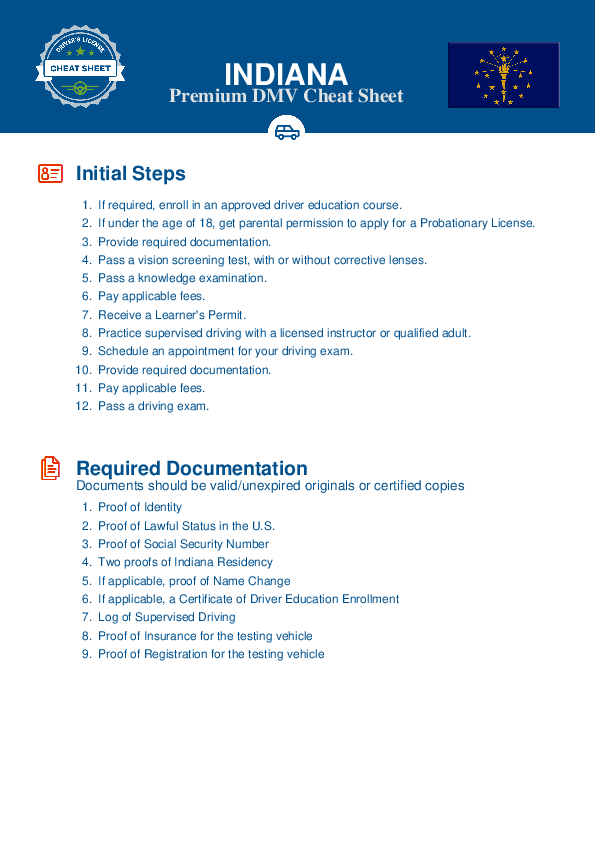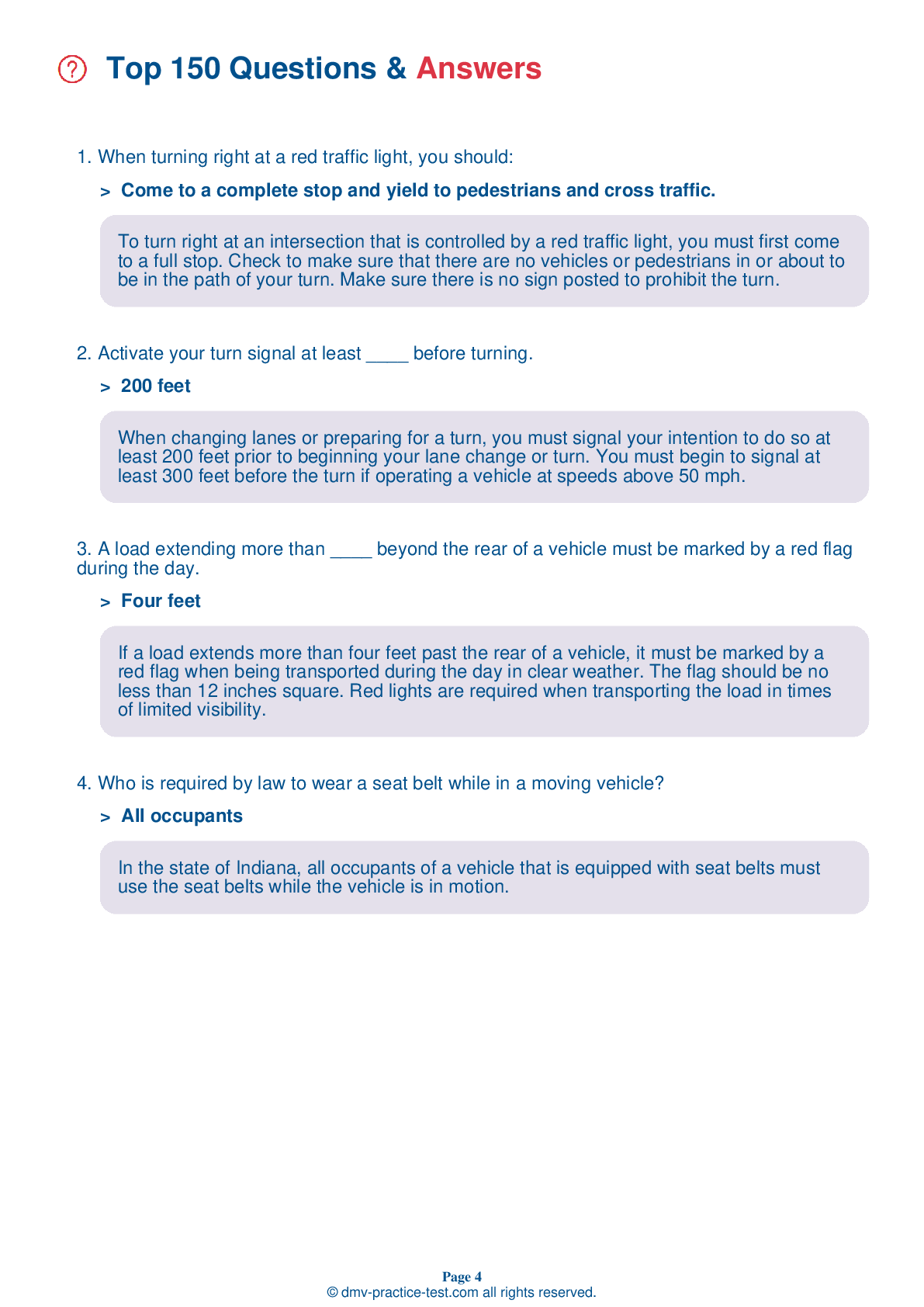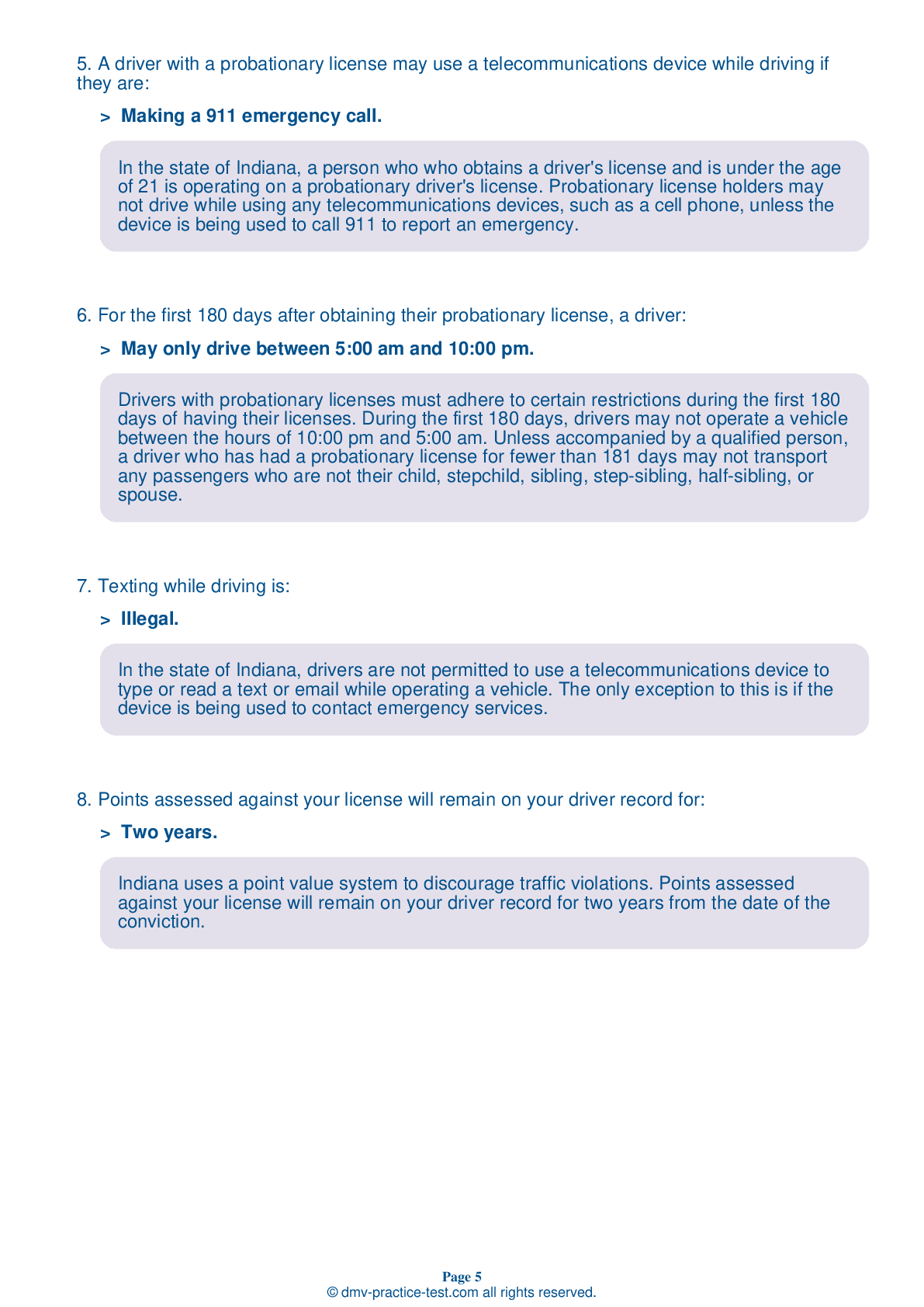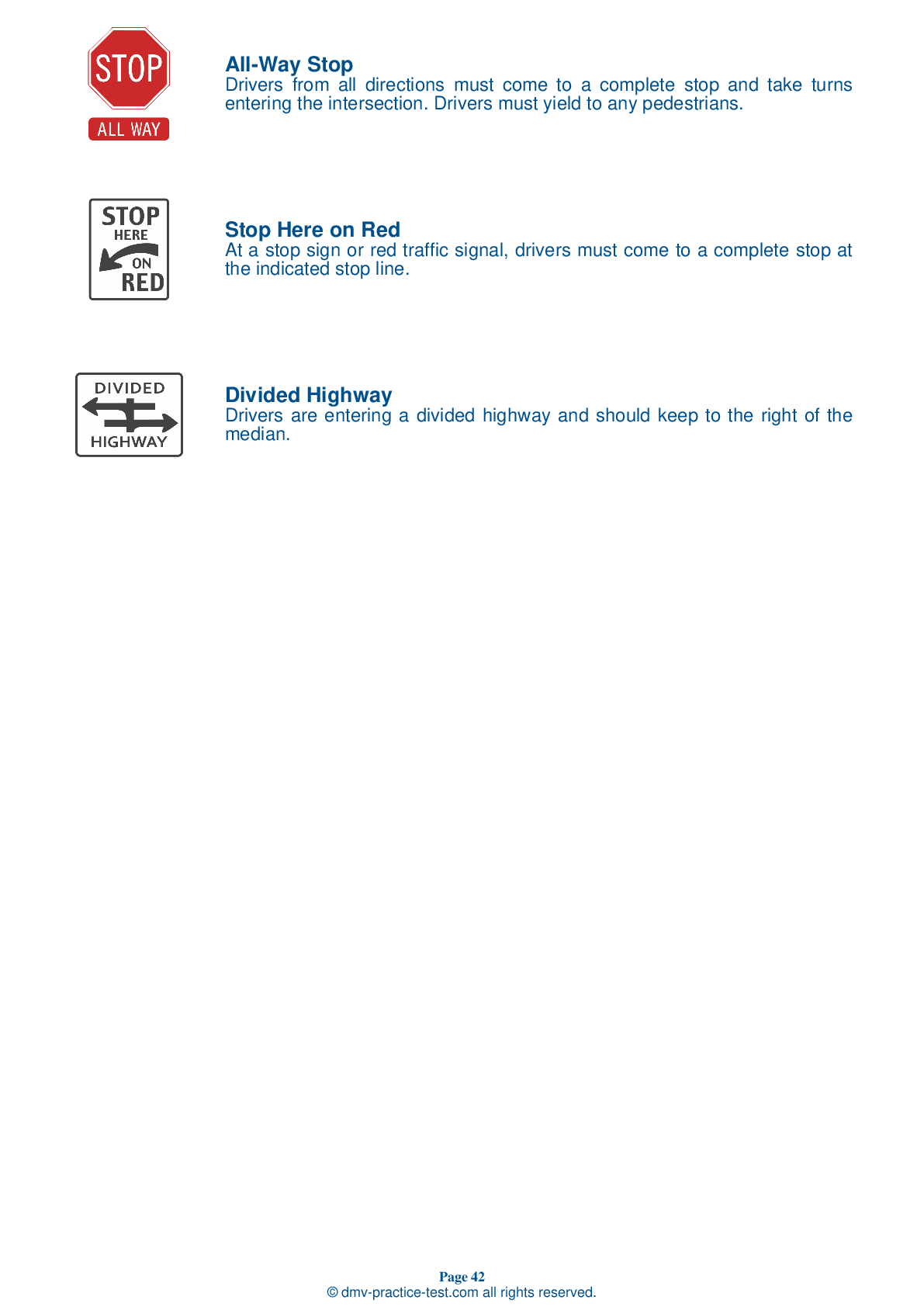FREE Indiana DMV Practice Test #7 Page 3 of 5
This set of Indiana DMV practise tests has been updated for January 2025. It includes questions based on the Indiana Driver Handbook's most significant traffic signals and laws for 2025. Use actual questions that are very similar (often identical!) to the DMV driving permit test and driver's licence exam to study for the DMV driving permit test and driver's licence exam.
On the practise exam, each question gets a tip and explanation to help you remember the concepts. The written component of the official Indiana DMV test will include questions about traffic rules, traffic signs, and driving statutes, as well as information from the Driver Handbook.
To obtain a passing grade, you must correctly answer 44 of the 50 questions. Take our DMV practise exam to help you prepare for your Indiana instruction permit or driver's licence.
The DMV exam is available in several languages.
Using any kind of testing assistance will result in an automatic fail, and the DMV may take additional action against your driver's licence, so stay away from it.
17 . This sign means:
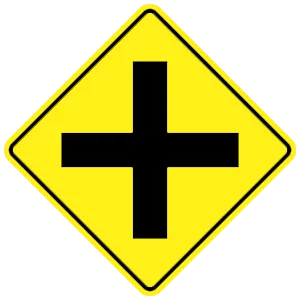
This sign warns of the presence of a crossroad ahead.
18 . If a driver sees an animal on the roadway:
Be very cautious any time you encounter an animal on the roadway. Pass the animal slowly to avoid startling or frightening it.
19 . To check your blind spot before changing lanes:
To check your blind spot before changing lanes, you should look over your shoulder in the direction that you plan to move.
20 . Signs indicating areas of public recreation are:
Signs that are brown indicate areas of cultural and historical significance or of public recreation. They can be a helpful resource when traveling in unfamiliar locations.
21 . A solid white line on the right edge of the highway slants in to the left. That shows that:
A solid line along the side of the road indicates where its edge is, marking the boundary between the travel lane and the shoulder. If the edge line angles toward the center of the road, this means that the road is narrower ahead.
22 . If your turn signals fail, you should use ____ to indicate that you are turning.
If your vehicle's turn signals do not work, you should use hand signals to indicate when you intend to change direction.
23 . If you drink alcohol socially, what helps ensure safe driving?
One strategy to avoid driving while impaired or intoxicated is to arrange for a ride home with a friend who does not drink. Drinking coffee or taking a cold shower cannot reduce your blood alcohol content or reduce the effects of alcohol. On average, it takes about an hour for the body to eliminate the alcohol from a single drink.
24 . When you see this black and yellow sign, it means:

This sign indicates that the road ahead changes direction at an extreme angle (in this case, to the right). Before you reach such an extreme curve, you should slow down as much as you would when making a turn at an intersection.
25 . Alcohol causes:
Consuming even a small amount of alcohol will impair your vision, judgment, concentration, and coordination.
26 . This sign means:
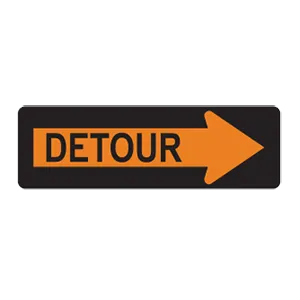
Construction zones pose dangers to both drivers and construction workers. Orange highway construction signs warn drivers to be careful when encountering construction zones. This sign directs drivers toward a detour when roadwork changes normal driving routes.
27 . You must yield for emergency vehicles:
You must yield the right-of-way to any emergency vehicle that is using its siren or flashing lights.
See the exact questions that will be on the 2025 Indiana DMV exam.
99.2% of people who use the cheat sheet pass the FIRST TIME
LT gives us an insight on how the cheat sheet provided her with all the study questions she needed before taking her test.
Joe initially studied with the handbook and failed his test, he eventually found us online, studied and pass his test the first time around.
